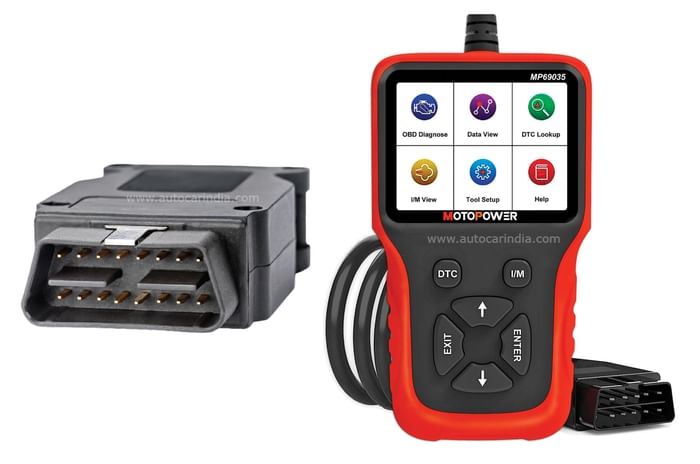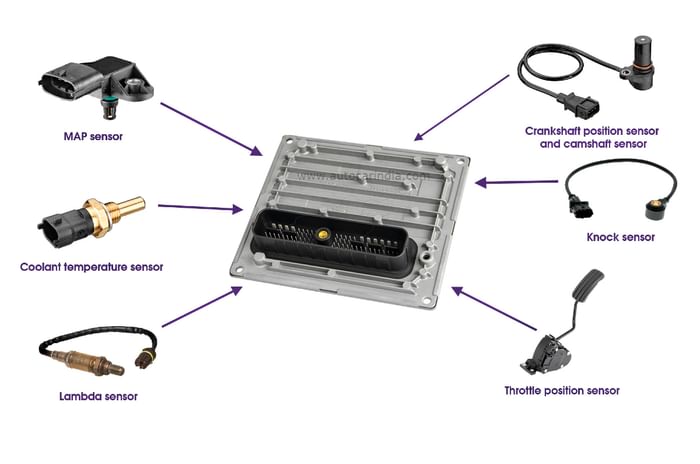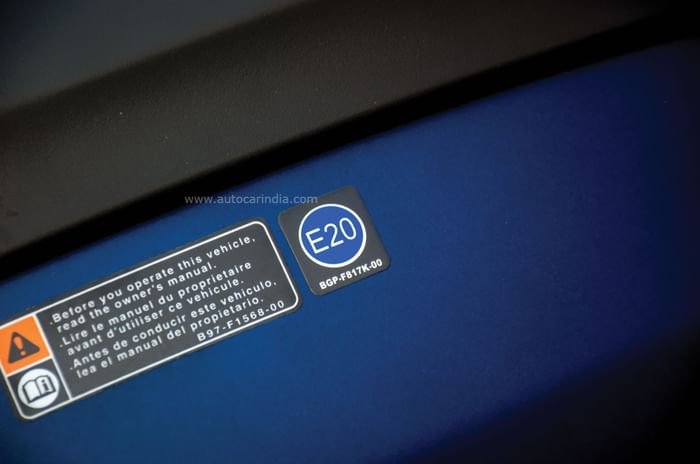Despite all the buzz surrounding EVs at the moment, India is still very much a market that is staggeringly dominated by internal combustion, and will continue to be so for the near future (especially in the two-wheeler realm). This is why the government is hard at work to ensure a sustainable future for ICE-powered mobility. Some of the steps along this path are now upon us, with OBD-2 technology becoming mandatory on all two-wheelers sold from April 1, 2023 onwards, and E20 fuel continuing to grow its presence across the nation.
OBD WHO?
OBD stands for onboard diagnostics, and to put it simply, this is a computer system on the vehicle that monitors and regulates its operation. An onboard computer receives data from the vast array of sensors across a vehicle and uses these readings to ensure proper functioning and alert the user in the case of improper functioning. It also incorporates a connector that allows service technicians to hook up a diagnostic tool and view information about what’s going wrong with the vehicle and where.

It’s worth pointing out that this is an area where cars have been many decades ahead of two-wheelers, first receiving OBD systems way back in the 1980s, while it only became mandatory on two-wheelers in India with BS6 emission norms in April 2020. Early OBD systems on cars varied quite drastically across manufacturers, which made life rather challenging. And so, in 1994, the California Air Resources Board issued a set of standards for OBD systems for all vehicles. These came to be known as OBD-2 standards, and all earlier systems were retroactively classified as OBD-1. Now, with the next stage of BS6 emission norms (BS6 Phase II) kicking in on April 1, 2023, the more advanced OBD-2 systems are mandatory on all two-wheelers sold in India.
THE SOFT TOUCH
Even fossil-fuelled machines have become increasingly digital over the years, and the vast majority of these new emissions compliance hurdles presented by BS6 Phase II have been overcome with software alone. The first stage of BS6 emission norms required the introduction of closed-loop fuel-injection systems (or a closed-loop e-carb, in the case of the Bajaj commuters) to keep a check on emissions. This next stage mandates that these systems be robust enough to continue functioning effectively even through real-world situations (and the imperfections they bring).

You can think of these fuel-injection systems as a symphony orchestra, with multiple different sensors forming the members, and the ECU (engine control unit) acting as the conductor. When each one does its job as per the score, the music that’s created is clean emissions from the tailpipe. Where OBD-2 comes in is to ensure that even when one of the members happens to play a wrong note, the performance doesn’t go horribly wrong.
What this means is that as part of the homologation process for BS6 Phase II, manufacturers are required to simulate a number of different sensor faults, and show that they are being correctly detected by the ECU, as well as that emissions are still being kept reasonably in check when these faults occur. The idea behind this is to ensure that the vehicle stays emissions-compliant for the duration of its expected life. Of course, there is some leeway in terms of the permissible pollutant levels during a fault scenario, but all vehicles homologated after April 1, 2023 will have to fall within this window.
In the same way that no orchestra conductor emerges from the womb with a baton in their hand, no ECU is complete until it has been “taught” how to do its job. And the vast majority of work surrounding BS6 Phase II is writing the software that allows an ECU to observe, analyse and reason as it should. Take the case of a misfire, for example. A misfire is one of the faults that manufacturers have to simulate as part of BS6 Phase II homologation. There are a number of factors that could cause a misfire: non-optimal air-fuel ratio, ignition timing being off, extreme engine temperatures, etc. And many real-world use cases can cause an occasional one-off misfire that usually goes fairly unnoticed even by the rider (but is detected by the engine’s crank position sensor). But in other cases, there may be a problem with the engine that’s causing a recurring misfire.
The ECU needs to be coded with enough logic to distinguish between these one-off misfires and a recurring misfire problem. And once the latter is detected, it has two more jobs to do. The first is to keep emission levels within the allowable window, and the second is to display a warning light to the rider so that the issue can get checked at the service centre.

This same principle has to be applied in a number of different cases, so that the conductor can identify and handle faults by any of their orchestra members. In other words, various sensor failures are simulated and tackled. And one of the most important cases is a lambda sensor failure. It’s important because the lambda sensor measures the oxygen content in the exhaust gases, which is an indication of the quality of combustion occurring within the engine. This feedback is used by the ECU to optimise the air-fuel ratio and ensure ideal combustion, which is imperative for the catalytic converter to reduce emissions effectively and function as it should.
Needless to say, a faulty lambda sensor reading has the potential to throw off emission values, and it’s important for the ECU to know how to react in these situations, as well as for the rider to be alerted of the issue. Once the bike is at the service centre, technicians can plug in the diagnostic tool, which gives them a clearer idea of what is going wrong and where.
HARD RESET
Most of the changes mentioned so far are achieved through calibration and coding – basically, software. The only noteworthy hardware change associated with OBD-2 norms is the new connector – the regulations mandate a standardised 16-pin connector design for connecting to the diagnostic tool. So, on paper at least, BS6 Phase II norms should not result in a major increase in costs – it’s R&D costs that manufacturers are likely to incur, rather than material costs.

What will necessitate more significant hardware changes, though, is the upcoming rise of ethanol content in our fuel. At present, we already have E10 fuel (petrol with a blended ethanol content of 10 percent) across the nation, and E20 fuel has also begun to roll out in certain pockets of the country. The government aims to make E20 available across the nation by 2025.
The higher ethanol content brings about a slight change in aspects like density, octane value and calorific value. But since all BS6 vehicles use closed-loop fuel-injection systems, they will be able to use the lambda sensor’s feedback and compensate for the ethanol content to ensure an optimal air-fuel ratio. We’re told that this automatic compensation will be the case up to E27.5, which is currently the mandated minimum ethanol content in petrol sold in Brazil (a global hotbed for ethanol blending and flex-fuel vehicles).
However, since the fuel itself is more corrosive in nature (owing to the fact that it is water-absorbent), it poses a threat to the many components that come in contact with it. The metal, rubber and plastic components of the fuel system that come into direct contact with the petrol will need to be able to withstand this nature, and that could require material changes in some cases (and a subsequent increase in purchase prices).
Moreover, older BS4 two-wheelers that use carburettors will not be able to compensate for the different characteristics of E20, and will end up running a slightly lean air-fuel mixture (too much oxygen or too little fuel) due to the higher oxygen content in the fuel itself. As a result, combustion temperatures will rise, and this could have harmful effects in the long run, both on the engine itself as well as the emission levels. This is simply a burden that BS4 vehicles, which are a diminishing, ageing population, will have to bear.
And it is also the cost we have to bear if we want to continue (however briefly) enjoying the charm and joy of internal combustion. BS6 Phase II tightens the belt even further on emission levels, and the ethanol in E20 fuel comes from carbon-neutral sources (primarily corn and sugarcane). These are some of the unavoidable steps that have to be taken to make internal combustion as sustainable as possible, as it enters its final act and EVs become universally viable. Think of them as a life-support machine, carrying this glorious near-double centurion to its inevitable end.





























